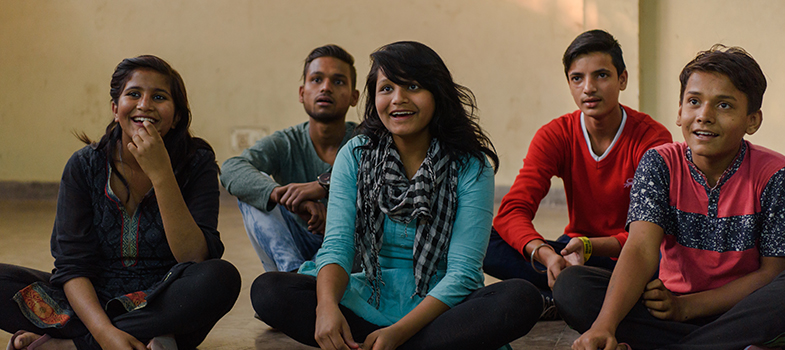1.3 Risk-based versus positive approaches
The next activity looks at risk-based and positive approaches to talking about sexual pleasure.
Activity 1.4: Risk-based or positive?
Part 1
A good way of thinking about the messages we give to young people around the topic of sexual pleasure is to ask whether they are risk-based or positive.
Read the story below and think about the messages the different parents give their children: are they risk-based or positive?
Two children live beside each other on a busy road. On the other side of the road is a playground and each child asks their parents whether they can go to the playground.
The parents of the first child tell him that the road is dangerous. There is too much traffic on the road and he might be injured if he tries to cross it alone.
The parents of the second child tell her that yes, the road is dangerous, but she will have to learn to cross busy roads like everyone else. So they show her how to look left and right and wait until there is no traffic so that she can cross the road safely.
A risk-based approach is an approach which focusses mainly on the risks or negative consequences of certain behaviour. In case of sexuality a risk-based approach means focusing on the negative consequences of sex (such as unwanted pregnancy or STIs) and ignores the reasons why people have sex and the positive outcomes. A risk based approach only warns people against ‘bad’ things, without giving proper information.
A positive approach focuses on sexuality as a potential source for well-being and pleasure in people’s lives. It aims to support people to be able to choose safely, to enjoy their sexuality safely no matter what their sexual orientation or gender identity is. A positive approach also teaches people skills and knowledge on how to prevent problems, and how to cope with them if they appear.
Young people are often told about the risks and the dangers of sex, but seldom about its pleasure and gains. They are often encouraged to feel guilty, ashamed or fearful of their own sexuality. A positive approach to CSE talks openly about risks or negative consequences, but in a wider context which focuses on the pleasures of sexual activity. The positive approach focuses on what young people need to gain sexual satisfaction, happiness and fulfilment in order to avoid the negative consequences.
Both approaches have the goal of keeping young people safe, but they do so in very different ways.
Part 2
Here is a list of the different ways you might teach CSE.
Select the appropriate choice on the scale according to whether you think it is part of a risk-based approach to CSE, a positive approach to CSE, or if you think it could be part of either approach.
Further thoughts
Dona D’Acosta Martinez is Executive Director of the Family Planning Association of Trinidad and Tobago. Dona has some amazing insights into what being ‘positive’ means in practice and why it is important. Watch the clip to find out more.

Transcript
1.2 What is essential for pleasure?


